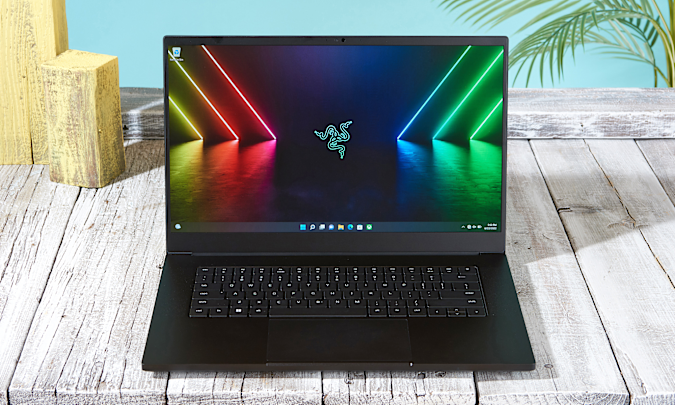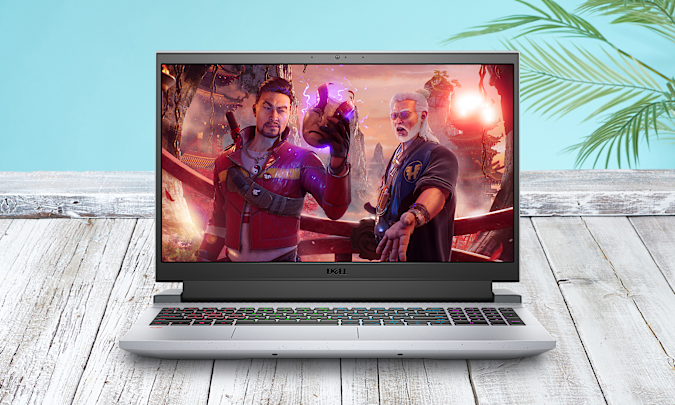All products recommended by Engadget are selected by our editorial team, independent of our parent company. Some of our stories include affiliate links. If you buy something through one of these links, we may earn an affiliate commission.
There’s never been a better time to be a PC gamer, especially if you’re always on the go. Gaming notebooks are lighter, more powerful and cheaper than ever before. They’re particularly useful for students because their beefy hardware could be helpful for rendering video and doing any other schoolwork that would make super-thin ultraportables sweat. You can find some general advice on choosing gaming laptops in our guide. But if you want to narrow down the field to a few great options, you’ve come to the right place.
Are gaming laptops good for school?
As we’ve mentioned, gaming laptops are especially helpful if you’re doing any demanding work. Their big promise is powerful graphics performance, which isn’t just limited to games. Video editing and 3D rendering programs can also tap into their GPUs to handle demanding tasks. While you can find decent GPUs on some productivity laptops, like Dell’s XPS 15, you can sometimes find better deals on gaming laptops. My general advice for any new workhorse machine: Get at least 16GB of RAM and the largest solid state drive you can find (ideally 1TB or more). Those components are both typically hard to upgrade down the line, so it’s worth investing what you can up front.
The one big downside to choosing a gaming notebook is portability. For the most part, we’d recommend 15-inch models to get the best balance of size and price. Those typically weigh in around 4.5 pounds, which is significantly more than a three-pound ultraportables. Today’s gaming notebooks are still far lighter than older models, though, so at least you won’t be lugging around a 10-pound brick. And if you’re looking for something lighter, there are plenty of 14-inch options these days. And if you’re not into LED lights and other gamer-centric bling, keep an eye out for more understated models (or make sure you know how to turn those lights off).
Best midrange for most people: ASUS Zephyrus G14
Will Lipman Photography for Engadget
The Zephyrus G14 is a bit more expensive than when it launched a few years ago, but it remains a fantastic 14-inch gaming laptop. This year, it’s toting AMD’s Ryzen 9 6900HS CPU and Radeon 6700S GPU. That’s enough power to play just about any modern game in 1,440p, and they should perform smoothly on the 120Hz or 144Hz QHD screens. Unlike the first G14 model, there’s also a built-in webcam with Windows Hello login support. What’s most impressive is that the G14 is still pretty portable for a gaming laptop, weighing in between 3.6 and 3.8 pounds.
Buy Zephyrus G14 at Amazon – $2,100
Best high-end option: Razer Blade 15

Will Lipman Photography for Engadget
For years, Razer has built a reputation for making gaming laptops that look as good as MacBooks. And that’s still true. Razer’s Blade 15 features a sleek and sturdy metal case, an understated design (unless you really kick up those RGB keyboard lights), and just about all the power you’d want in a portable gaming powerhouse. If money is no object, you can equip the Blade 15 with Intel’s latest 12th-gen processors, NVIDIA’s powerful RTX 3080 Ti and your choice of 144Hz 4k, 240Hz QHD or 360Hz HD screens..
While you’ll pay a bit more for the Blade 15 compared to some other models, you’ve still got a few different price points to work with. The entry-level model starts at $1,799 with an RTX 3060 GPU and 144Hz 1080p display. That’s certainly enough power for most games and creative apps. If you’re looking for something a bit smaller, Razer’s new AMD-powered Blade 14 looks compelling as well.
Buy Razer Blade 15 at Amazon – $3,000
A thin 14-inch option: Alienware X14

Will Lipman Photography for Engadget
If you’re looking for a thin and light computer that can still handle some gaming and demanding schoolwork, Alienware’s X14 is one of the best choices around. It measures at just 0.57 inches thick, which means it can fit into all sorts of slim bags, and weighs a bit more than four pounds. Its gorgeous 1080p screen supports Dolby Vision and NVIDIA G-SYNC, so it’ll look great both for movie-watching and gameplay. And, well, it just looks really cool – it’s the most portable variation of Alienware’s sci-fi aesthetic.
Buy Alienware X14 at Dell – $1,470
Best budget option: Dell G5 15

Engadget
While Alienware has established itself as a solid premium brand, Dell’s cheaper G-series notebooks are worth a look for anyone on a budget. In particular, the G5 15 continues the trend of delivering very capable hardware – including Intel’s latest 12th-gen CPUs, AMD’s Ryzen 6000 chips and NVIDIA’s RTX 30-series GPUs – for under $1,000. Sure, the case is mostly plastic, and the screen doesn’t offer all of the latest niceties, but for the price it’s hard to find anything more powerful.
Buy G5 15 at Dell – $920
Best no-limit gaming laptop: ASUS Zephyrus Duo 16

ASUS
Taking the idea of a gaming laptop to the absolute extreme, ASUS’s latest Zephyrus Duo 16 combines AMD’s latest Ryzen mobile processors with all of NVIDIA’s great RTX 30-series hardware. And, true to its name, it has two screens: a gorgeous 16-inch main display (with optional Mini-LED backlighting), and a very wide 14-inch secondary panel right below. That opens up a near desktop-level of multitasking, since you can have windows spread across both screens. It could help you to browse the web while keeping an eye on Twitter at the same time. (Or maybe following an online lecture while fitting in a Halo Infinite match on your main screen. We won’t tell.)
Buy Zephyrus Duo 16 at Amazon – $4,200

